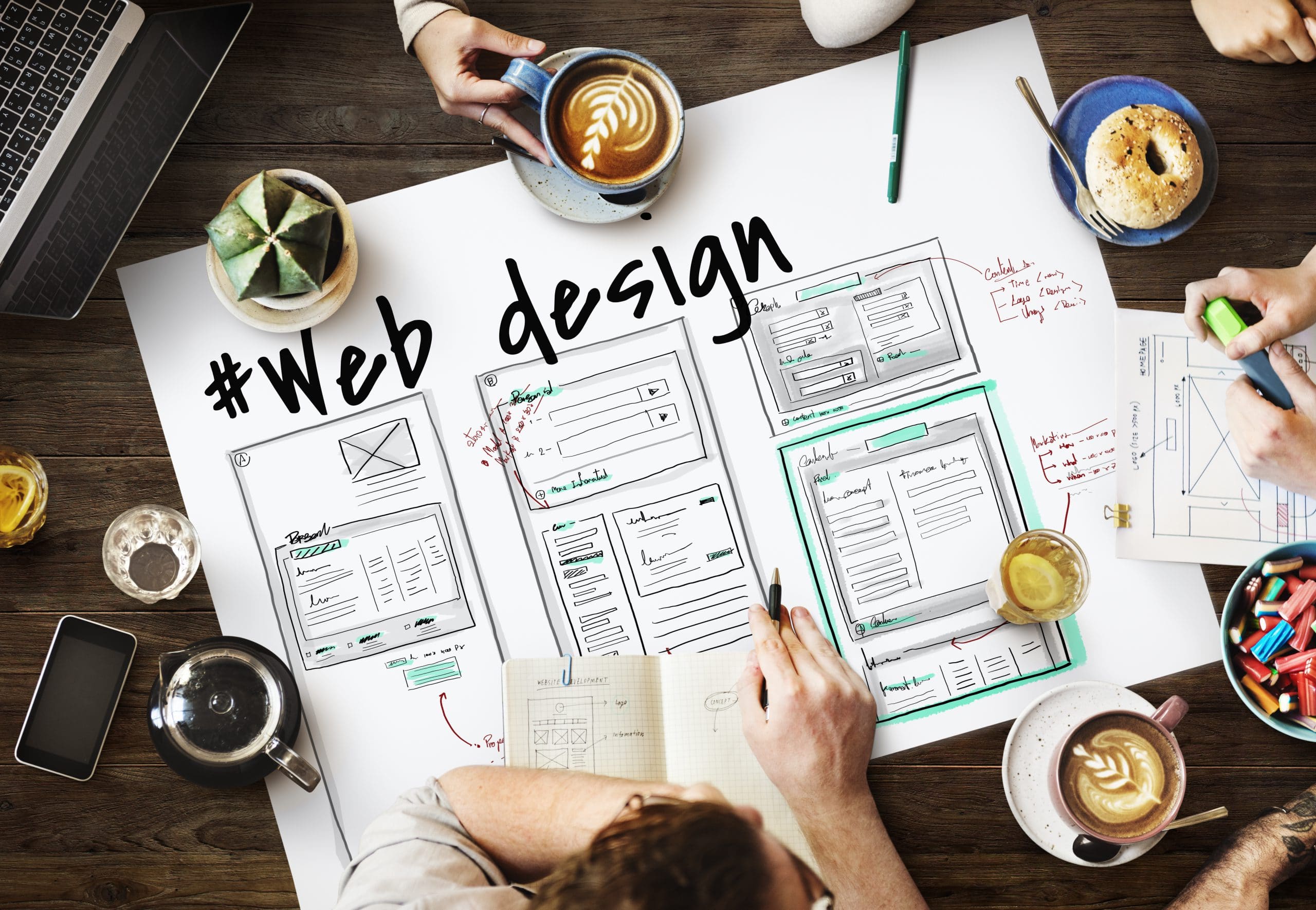Opening the Secrets to Spectacular Internet Design That Captivates Audiences
Sensational website design surpasses aesthetics; it is a cautious orchestration of customer experience, visual components, and technical implementation. Developers should take into consideration elements such as navigating, shade systems, and typography to create an engaging platform. Each aspect plays an essential function in assisting customer communication. Understanding these elements can transform a web site from just useful to truly charming. What certain methods can boost a layout to fulfill this standard?
Comprehending the Relevance of User Experience
Exactly how does customer experience form the effectiveness of a site? Customer experience (UX) plays an essential role in identifying how visitors interact with a site. A well-designed UX guarantees that users can navigate intuitively, find information quickly, and accomplish their objectives without frustration. This favorable experience urges customers to remain much longer, engage more deeply, and ultimately return. Conversely, an inadequate UX can bring about high bounce rates and shed possibilities, as visitors might abandon the website out of complication or inconvenience. Elements such as load times, accessibility, and mobile optimization are critical parts that add to a successful UX. Ultimately, focusing on individual experience can significantly boost a web site's efficiency and its ability to fulfill both user needs and service goals.
The Role of Visual Pecking Order in Website Design
Aesthetic pecking order is essential in website design as it guides customers with web content and improves overall functionality. By efficiently making use of contrast and typography, developers can create a clear framework that highlights essential details. Comprehending these components enables for a more appealing and intuitive individual experience.
Relevance of Visual Pecking Order
While effective web Design incorporates different components, the importance of aesthetic power structure can not be overstated. Aesthetic hierarchy guides customers through material by developing an order of importance. It makes it possible for designers to stress essential elements, guiding customer focus to important details and enhancing use. By tactically using size, shade, and spacing, developers create a clear path for audiences to comply with, making certain that important messages stand apart. This company minimizes cognitive lots, allowing users to browse the interface intuitively. A well-defined visual pecking order not only enhances individual experience yet additionally raises involvement, as site visitors are extra likely to absorb and act on content that is presented clearly. Ultimately, effective visual hierarchy fosters a smooth communication in between customers and the web site.
Efficient Use of Contrast

Comparison functions as an effective tool in web Design, enhancing aesthetic power structure and assisting individual perception. By strategically utilizing different shades, sizes, and shapes, designers can develop focal factors that attract interest to important aspects, such as phone calls to action or key information. High contrast in between message and history improves readability, guaranteeing that individuals can easily eat material. Additionally, varying degrees of comparison in pictures and graphics can aid develop a natural visual while efficiently communicating messages. Designers need to take into consideration the emotional impact of comparison, as it can evoke various feelings and reactions from customers. Eventually, the reliable use of comparison not only improves a web site yet likewise boosts performance, leading to a much better user experience.
Typography's Effect on Design
Typography plays a significant function in forming a site's total Design and user experience. It develops an aesthetic hierarchy that overviews site visitors through material, allowing them to absorb info efficiently. Reliable typography utilizes variations in font style weight, dimension, and style to emphasize crucial components, creating a clear distinction in between headings, subheadings, and body message. This power structure not only enhances readability however additionally records interest, influencing just how users communicate with the website. Additionally, the selection of typefaces can evoke specific emotions and line up with brand identity, strengthening the web site's message. By purposefully implementing typography, designers can create a cohesive and appealing experience that mesmerizes audiences, eventually causing boosted customer retention and satisfaction.
Choosing the Right Shade Scheme
Picking the appropriate shade scheme is essential in web Design, as it influences user feelings and assumptions via shade psychology concepts. Unified color combinations not only enhance aesthetic allure yet additionally ensure a cohesive visual experience. Understanding these elements can significantly impact the effectiveness of a website's Design.
Shade Psychology Concepts
Comprehending color psychology is essential for reliable website design, as it can significantly influence user emotions and actions. Various colors evoke details sensations; as an example, blue typically conveys trust and peace, while red can stimulate enjoyment or seriousness. Designers should consider the target audience and the message they wish to connect when choosing a color scheme. Warm shades have a tendency to get attention and boost activity, making them ideal for call-to-action buttons. Alternatively, great colors can produce a feeling of calmness, perfect for brands advertising tranquility. By tactically employing color selections, designers can assist user interactions, boost brand recognition, and develop a memorable experience that reverberates with site visitors on an emotional level.
Unified Shade Combinations
Efficient internet Design relies not only on shade psychology yet also on the capability to develop unified color combinations. Choosing a natural scheme enhances visual charm and cultivates a positive user experience. Developers usually utilize shade theory concepts, such as complementary, comparable, and link triadic plans, to attain equilibrium and contrast.
Complementary colors, positioned opposite on the shade wheel, develop striking visuals, while similar shades, found adjacent, produce a peaceful and cohesive appearance. In addition, triadic mixes, containing three evenly spaced colors, offer vibrancy without overwhelming the audience.
Integrating neutral tones can likewise ground a style, enabling brighter shades to attract attention. Inevitably, thoughtful shade option can greatly raise a web site's visual, making it a lot more appealing and inviting for audiences.

Typography: Selecting Fonts That Improve Readability
When making a website, the selection of fonts plays an important function in boosting readability and making certain that users can easily engage with the content. Typography influences not only the looks of a website yet additionally the customer experience. Picking the appropriate font entails taking into consideration variables such as typeface dimension, line spacing, and comparison versus the background. Sans-serif font styles are typically chosen for digital content due to their clean lines and readability on displays. Furthermore, preserving a regular typeface pecking order assists guide users via the info, making it much easier to differentiate headings from body text. Inevitably, the ideal font style selection can change an internet site, making it a lot more accessible and enticing to a diverse audience while maintaining the focus on the message being shared.
Responsive Design: Adjusting to Different Instruments
Exactly how can a website successfully deal with customers across a wide variety of devices? The response exists in responsive Design, an essential element in contemporary web advancement (Web Design Johannesburg). Receptive Design guarantees that a site adjusts seamlessly to different screen sizes, from desktop computers to smartphones. This method uses flexible grids, liquid photos, and CSS media questions, enabling web content to restructure and resize based on the user's device. Therefore, customers delight in a superb viewing experience, decreasing the need for extreme scrolling or zooming. In addition, receptive Design enhances site performance and enhances internet search engine rankings, as online search engine prioritize mobile-friendly websites. Inevitably, welcoming receptive Design is basic for engaging users and providing a constant experience, despite exactly how they access the internet
The Power of Images and Graphics
Images and graphics offer as effective devices in website design, significantly affecting individual interaction and understanding. High-grade visuals can evoke emotions, communicate messages promptly, and boost storytelling. When tactically integrated, images astounds visitors, drawing them into the content and encouraging exploration. Graphics, such as infographics and icons, simplify complicated info and make it extra digestible. Furthermore, regular aesthetic branding cultivates recognition and count on, strengthening the website's identity. The selection of designs, forms, and colors also plays a vital function in leading customer habits, resulting in desired activities. Eventually, effective usage of images and graphics not only beautifies a website but additionally boosts functionality, creating a harmonious equilibrium that resonates with the audience and drives involvement.
Enhancing Load Times for Better Involvement
Efficient website design incorporates not only striking visuals but additionally the More about the author technical aspects that affect user experience. One essential aspect is optimizing lots times, as slow-loading sites usually cause high bounce prices and reduced customer interaction. Approaches to improve lots speed consist of pressing pictures, leveraging browser caching, and decreasing making use of hefty scripts - Web Design Johannesburg. Furthermore, making use of content shipment networks (CDNs) can disperse site content effectively, ensuring faster gain access to for click to read customers worldwide. A streamlined Design, with fewer HTTP requests, can additionally add to improved packing times. By focusing on these technological optimizations, developers can create a seamless experience that mesmerizes target markets and urges them to discover the website, ultimately increasing interaction and conversion prices
Often Asked Inquiries
Just how Do I Evaluate My Site's Present Design Efficiency?

What Prevail Website Design Blunders to Stay Clear Of?
Common website design mistakes include messy designs, inadequate navigating, absence of mobile responsiveness, inadequate usage of shade and typography, slow-moving filling times, and neglecting ease of access. Preventing these errors improves individual experience and boosts interaction.
Exactly how Commonly Should I Update My Web Site Design?
The regularity of web site Design updates must preferably be every 2 to 3 years. Small changes and normal analyses can boost customer experience, warranty compatibility with existing patterns, and preserve significance in a quickly developing digital landscape.
Can I Make Use Of Supply Photos As Opposed To Original Graphics?
Using supply images as opposed to initial graphics can be a functional option for many. However, it might lack uniqueness and credibility, possibly interfering with a brand name's identification and general user involvement on the web site.
What Tools Can Aid Me Evaluate My Website's Use?
To evaluate a website's use, different devices are available, including UserTesting, Hotjar, and Crazy Egg. These systems help with user comments and behavior evaluation, helping designers recognize areas for renovation and enhance individual experience effectively.
Typography plays a substantial role in forming a website's general Design and customer experience. Selecting the appropriate color combination is essential in web Design, as it affects customer emotions and assumptions via color psychology principles. Website Design Klerksdorp. Understanding shade psychology is vital for reliable web Design, as it can significantly affect customer emotions and habits. When making a website, the choice of font styles plays a crucial function in improving readability and making certain that users can quickly engage with the material. Reliable internet Design encompasses not only striking visuals however likewise the technological facets that affect customer experience